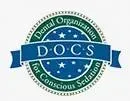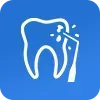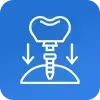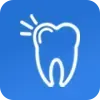Our Dental Services
At Stonebrook Dental in Sacramento, we believe everyone deserves a healthy, beautiful smile. Dr. Kalpesh Patel and our caring team are proud to offer a complete range of dental services under one roof, using advanced technology and a personalized approach. Whether you’re due for a checkup or need urgent dental care, we’re here to serve your whole family.
Safeguard your family’s smiles with thorough dental checkups, professional cleanings, and state-of-the-art digital X-rays at Stonebrook Dental. Our proactive approach focuses on early detection and prevention, helping you avoids complex dental problems and supporting lifelong oral wellness.
Regain the full function and appearance of your smile with modern dental implant solutions. We use advanced techniques to securely replace missing teeth, delivering results that look, feel, and function just like your natural teeth—so you can eat, speak, and smile with confidence.
Transform your smile and boost your self-esteem with our range of cosmetic dental treatments. Whether you’re looking to brighten your teeth, fix minor flaws, or straighten your smile, our customized options—including whitening, veneers, bonding, and clear aligners—help you achieve the look you desire.
Renew your oral health with restorative treatments designed for lasting comfort and beauty. From tooth-colored fillings and crowns to bridges and dentures, our team restores strength, function, and aesthetics, helping you enjoy everyday activities without worry.
Experience anxiety-free dental care with our safe and gentle sedation options. We offer personalized sedation techniques to ensure you feel calm and comfortable throughout your visit, making dental care accessible even for the most nervous patients.
Dental emergencies don’t wait—and neither should you. Whether you’re facing severe tooth pain, a broken tooth, or sudden swelling, our responsive team delivers urgent care to relieve discomfort and protect your oral health as quickly as possible.
Certifications & Professional Memberships





Our Patients Say
Patient Experiences That Redefine the Future of Stone Brook Dental
We can’t wait to meet you!
Whether you're joining us for dental care, a smile consultation, or just arriving for the first time, our team at Stonebrook Dental is here to greet you with warmth and expert care
Dentist Office Information
Procedures & Services
Location & Contact Information
Office Hours
Monday : 8am – 5pm
Tuesday : 8am – 5pm
Wednesday : 9am – 6pm
Thursday : 9am – 6pm
Friday : 8am – 4pm
Saturday : Closed
Sunday : Closed
Follow us
© Copyright 2025 Stonebrook Dental. All Rights Reserved. | Sitemap
Powered by Get Top Listed Inc. | Disclaimer | Privacy Policy | Terms and Conditions








